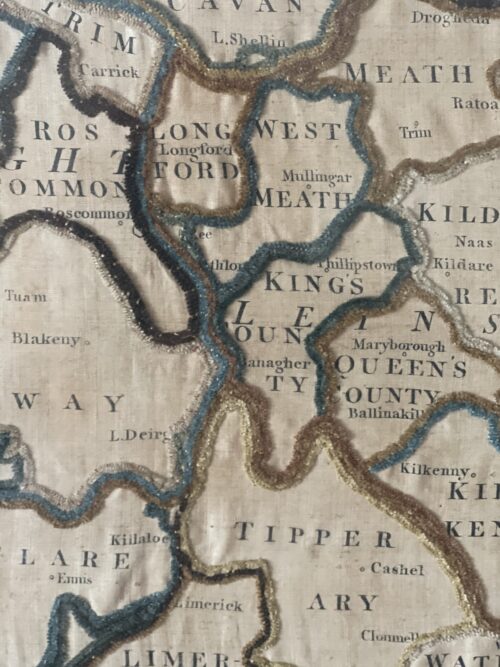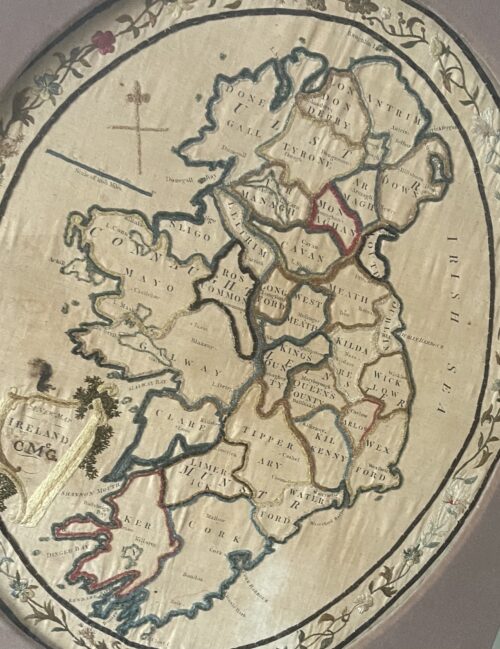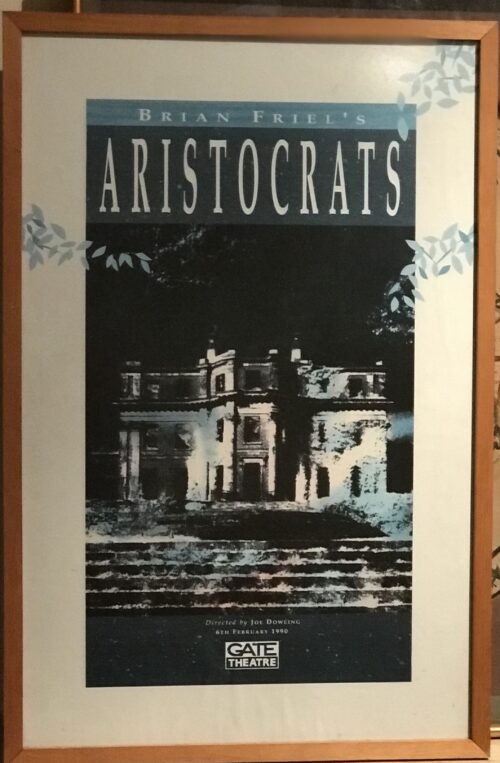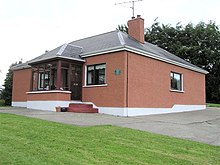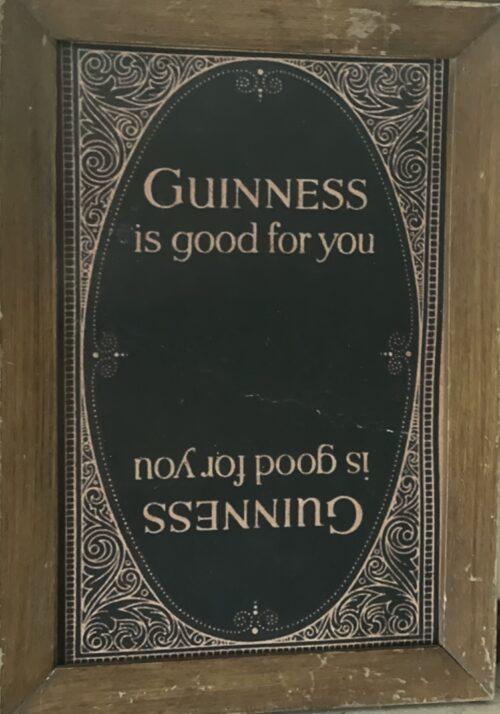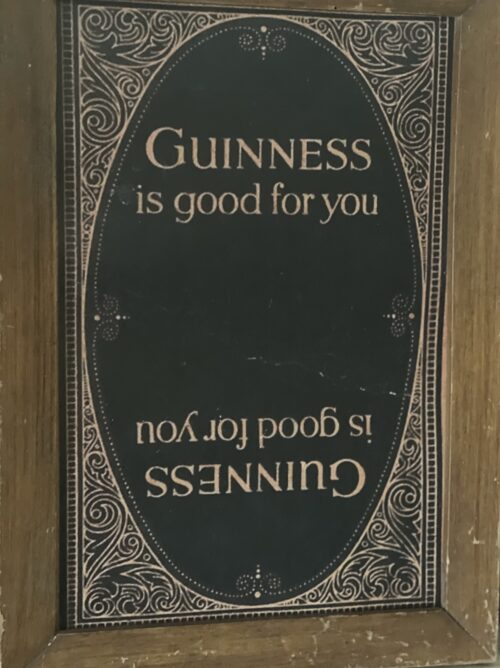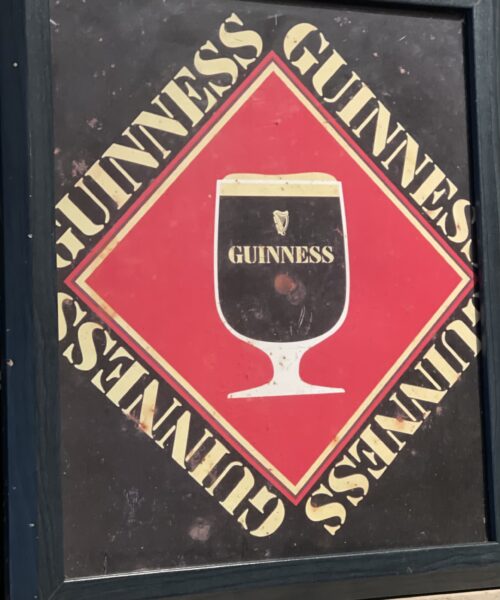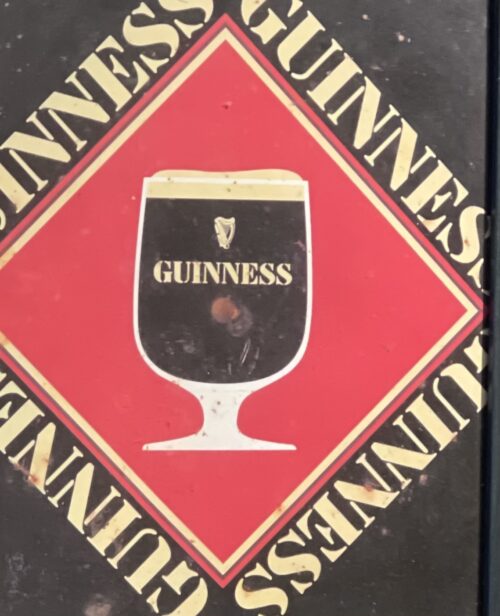
 52cm x 60cm Coonagh Co Limerick
52cm x 60cm Coonagh Co Limerick


 52cm x 60cm Coonagh Co Limerick
52cm x 60cm Coonagh Co Limerick
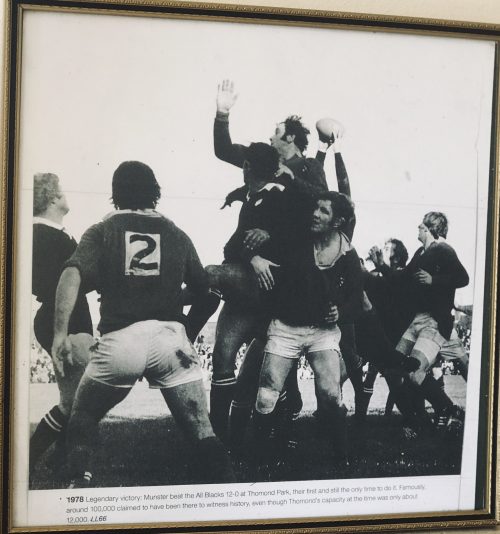

 Many years on, Stuart Wilson vividly recalled the Dennison tackles and spoke about them in remarkable detail and with commendable honesty: “The move involved me coming in from the blind side wing and it had been working very well on tour. It was a workable move and it was paying off so we just kept rolling it out. Against Munster, the gap opened up brilliantly as it was supposed to except that there was this little guy called Seamus Dennison sitting there in front of me.
“He just basically smacked the living daylights out of me. I dusted myself off and thought, I don’t want to have to do that again. Ten minutes later, we called the same move again thinking we’d change it slightly but, no, it didn’t work and I got hammered again.”
The game was 11 minutes old when the most famous try in the history of Munster rugby was scored.
Tom Kiernan recalled: “It came from a great piece of anticipation by Bowen who in the first place had to run around his man to get to Ward’s kick ahead. He then beat two men and when finally tackled, managed to keep his balance and deliver the ball to Cantillon who went on to score. All of this was evidence of sharpness on Bowen’s part.”
Very soon it would be 9-0. In the first five minutes, a towering garryowen by skipper Canniffe had exposed the vulnerability of the New Zealand rearguard under the high ball. They were to be examined once or twice more but it was from a long range but badly struck penalty attempt by Ward that full-back Brian McKechnie knocked on some 15 yards from his line and close to where Cantillon had touched down a few minutes earlier. You could sense White, Whelan, McLoughlin and co in the front five of the Munster scrum smacking their lips as they settled for the scrum. A quick, straight put-in by Canniffe, a well controlled heel, a smart pass by the scrum-half to Ward and the inevitability of a drop goal. And that’s exactly what happened.
The All Blacks enjoyed the majority of forward possession but the harder they tried, the more they fell into the trap set by the wily Kiernan and so brilliantly carried out by every member of the Munster team.
The tourists might have edged the line-out contest through Andy Haden and Frank Oliver but scrum-half Mark Donaldson endured a miserable afternoon as the Munster forwards poured through and buried him in the Thomond Park turf.
As the minutes passed and the All Blacks became more and more unsure as to what to try next, the Thomond Park hordes chanted “Munster-Munster–Munster” to an ever increasing crescendo until with 12 minutes to go, the noise levels reached deafening proportions.
And then ... a deep, probing kick by Ward put Wilson under further pressure. Eventually, he stumbled over the ball as it crossed the line and nervously conceded a five-metre scrum. The Munster heel was disrupted but the ruck was won, Tucker gained possession and slipped a lovely little pass to Ward whose gifted feet and speed of thought enabled him in a twinkle to drop a goal although surrounded by a swarm of black jerseys. So the game entered its final 10 minutes with the All Blacks needing three scores to win and, of course, that was never going to happen.
Munster knew this, so, too, did the All Blacks. Stu Wilson admitted as much as he explained his part in Wardy’s second drop goal: “Tony Ward banged it down, it bounced a little bit, jigged here, jigged there, and I stumbled, fell over, and all of a sudden the heat was on me. They were good chasers. A kick is a kick — but if you have lots of good chasers on it, they make bad kicks look good. I looked up and realised — I’m not going to run out of here so I just dotted it down. I wasn’t going to run that ball back out at them because five of those mad guys were coming down the track at me and I’m thinking, I’m being hit by these guys all day and I’m looking after my body, thank you. Of course it was a five-yard scrum and Ward banged over another drop goal. That was it, there was the game”.
The final whistle duly sounded with Munster 12 points ahead but the heroes of the hour still had to get off the field and reach the safety of the dressing room. Bodies were embraced, faces were kissed, backs were pummelled, you name it, the gauntlet had to be walked. Even the All Blacks seemed impressed with the sense of joy being released all about them. Andy Haden recalled “the sea of red supporters all over the pitch after the game, you could hardly get off for the wave of celebration that was going on. The whole of Thomond Park glowed in the warmth that someone had put one over on the Blacks.”
Controversially, the All Blacks coach, Jack Gleeson (usually a man capable of accepting the good with the bad and who passed away of cancer within 12 months of the tour), in an unguarded (although possibly misunderstood) moment on the following day, let slip his innermost thoughts on the game.
“We were up against a team of kamikaze tacklers,” he lamented. “We set out on this tour to play 15-man rugby but if teams were to adopt the Munster approach and do all they could to stop the All Blacks from playing an attacking game, then the tour and the game would suffer.”
It was interpreted by the majority of observers as a rare piece of sour grapes from a group who had accepted the defeat in good spirit and it certainly did nothing to diminish Munster respect for the All Blacks and their proud rugby tradition.
Many years on, Stuart Wilson vividly recalled the Dennison tackles and spoke about them in remarkable detail and with commendable honesty: “The move involved me coming in from the blind side wing and it had been working very well on tour. It was a workable move and it was paying off so we just kept rolling it out. Against Munster, the gap opened up brilliantly as it was supposed to except that there was this little guy called Seamus Dennison sitting there in front of me.
“He just basically smacked the living daylights out of me. I dusted myself off and thought, I don’t want to have to do that again. Ten minutes later, we called the same move again thinking we’d change it slightly but, no, it didn’t work and I got hammered again.”
The game was 11 minutes old when the most famous try in the history of Munster rugby was scored.
Tom Kiernan recalled: “It came from a great piece of anticipation by Bowen who in the first place had to run around his man to get to Ward’s kick ahead. He then beat two men and when finally tackled, managed to keep his balance and deliver the ball to Cantillon who went on to score. All of this was evidence of sharpness on Bowen’s part.”
Very soon it would be 9-0. In the first five minutes, a towering garryowen by skipper Canniffe had exposed the vulnerability of the New Zealand rearguard under the high ball. They were to be examined once or twice more but it was from a long range but badly struck penalty attempt by Ward that full-back Brian McKechnie knocked on some 15 yards from his line and close to where Cantillon had touched down a few minutes earlier. You could sense White, Whelan, McLoughlin and co in the front five of the Munster scrum smacking their lips as they settled for the scrum. A quick, straight put-in by Canniffe, a well controlled heel, a smart pass by the scrum-half to Ward and the inevitability of a drop goal. And that’s exactly what happened.
The All Blacks enjoyed the majority of forward possession but the harder they tried, the more they fell into the trap set by the wily Kiernan and so brilliantly carried out by every member of the Munster team.
The tourists might have edged the line-out contest through Andy Haden and Frank Oliver but scrum-half Mark Donaldson endured a miserable afternoon as the Munster forwards poured through and buried him in the Thomond Park turf.
As the minutes passed and the All Blacks became more and more unsure as to what to try next, the Thomond Park hordes chanted “Munster-Munster–Munster” to an ever increasing crescendo until with 12 minutes to go, the noise levels reached deafening proportions.
And then ... a deep, probing kick by Ward put Wilson under further pressure. Eventually, he stumbled over the ball as it crossed the line and nervously conceded a five-metre scrum. The Munster heel was disrupted but the ruck was won, Tucker gained possession and slipped a lovely little pass to Ward whose gifted feet and speed of thought enabled him in a twinkle to drop a goal although surrounded by a swarm of black jerseys. So the game entered its final 10 minutes with the All Blacks needing three scores to win and, of course, that was never going to happen.
Munster knew this, so, too, did the All Blacks. Stu Wilson admitted as much as he explained his part in Wardy’s second drop goal: “Tony Ward banged it down, it bounced a little bit, jigged here, jigged there, and I stumbled, fell over, and all of a sudden the heat was on me. They were good chasers. A kick is a kick — but if you have lots of good chasers on it, they make bad kicks look good. I looked up and realised — I’m not going to run out of here so I just dotted it down. I wasn’t going to run that ball back out at them because five of those mad guys were coming down the track at me and I’m thinking, I’m being hit by these guys all day and I’m looking after my body, thank you. Of course it was a five-yard scrum and Ward banged over another drop goal. That was it, there was the game”.
The final whistle duly sounded with Munster 12 points ahead but the heroes of the hour still had to get off the field and reach the safety of the dressing room. Bodies were embraced, faces were kissed, backs were pummelled, you name it, the gauntlet had to be walked. Even the All Blacks seemed impressed with the sense of joy being released all about them. Andy Haden recalled “the sea of red supporters all over the pitch after the game, you could hardly get off for the wave of celebration that was going on. The whole of Thomond Park glowed in the warmth that someone had put one over on the Blacks.”
Controversially, the All Blacks coach, Jack Gleeson (usually a man capable of accepting the good with the bad and who passed away of cancer within 12 months of the tour), in an unguarded (although possibly misunderstood) moment on the following day, let slip his innermost thoughts on the game.
“We were up against a team of kamikaze tacklers,” he lamented. “We set out on this tour to play 15-man rugby but if teams were to adopt the Munster approach and do all they could to stop the All Blacks from playing an attacking game, then the tour and the game would suffer.”
It was interpreted by the majority of observers as a rare piece of sour grapes from a group who had accepted the defeat in good spirit and it certainly did nothing to diminish Munster respect for the All Blacks and their proud rugby tradition.



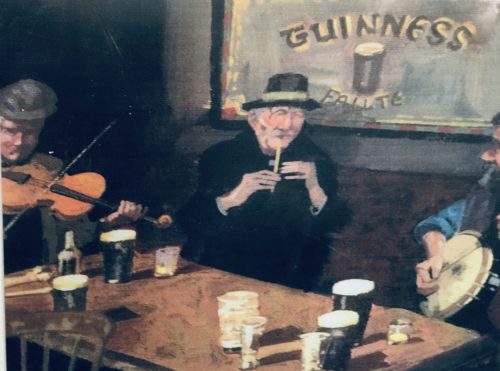
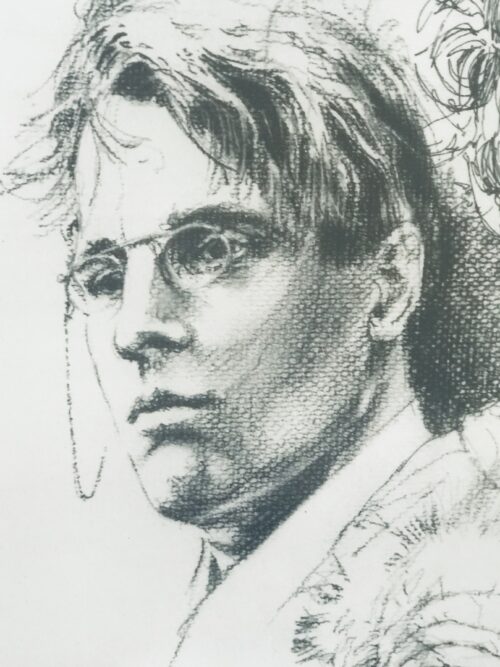
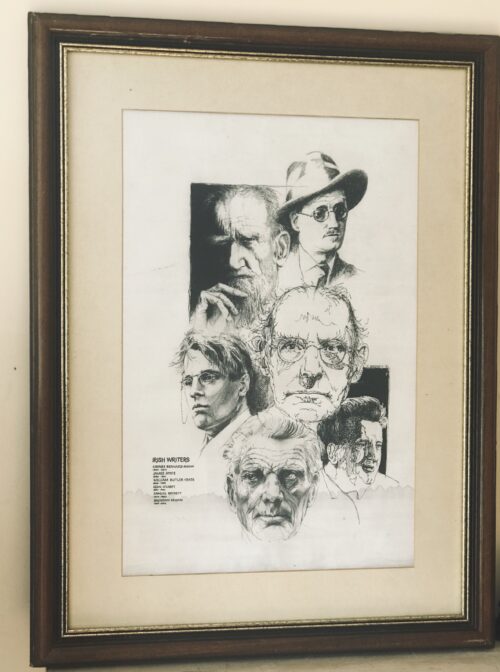


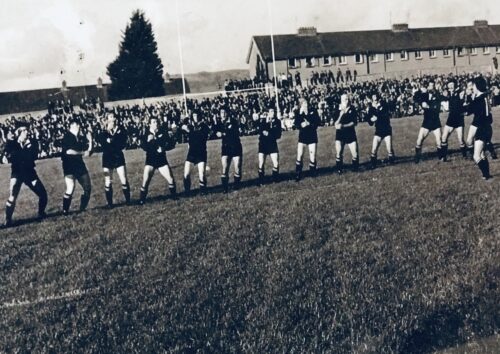
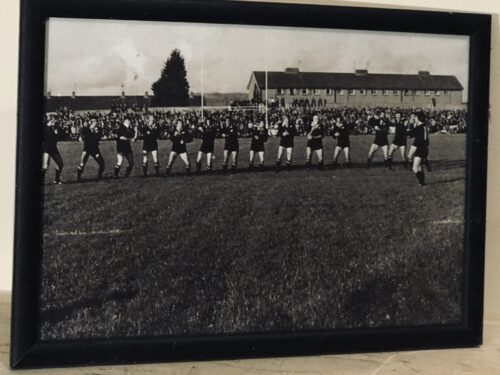

 Many years on, Stuart Wilson vividly recalled the Dennison tackles and spoke about them in remarkable detail and with commendable honesty: “The move involved me coming in from the blind side wing and it had been working very well on tour. It was a workable move and it was paying off so we just kept rolling it out. Against Munster, the gap opened up brilliantly as it was supposed to except that there was this little guy called Seamus Dennison sitting there in front of me.
“He just basically smacked the living daylights out of me. I dusted myself off and thought, I don’t want to have to do that again. Ten minutes later, we called the same move again thinking we’d change it slightly but, no, it didn’t work and I got hammered again.”
The game was 11 minutes old when the most famous try in the history of Munster rugby was scored.
Tom Kiernan recalled: “It came from a great piece of anticipation by Bowen who in the first place had to run around his man to get to Ward’s kick ahead. He then beat two men and when finally tackled, managed to keep his balance and deliver the ball to Cantillon who went on to score. All of this was evidence of sharpness on Bowen’s part.”
Very soon it would be 9-0. In the first five minutes, a towering garryowen by skipper Canniffe had exposed the vulnerability of the New Zealand rearguard under the high ball. They were to be examined once or twice more but it was from a long range but badly struck penalty attempt by Ward that full-back Brian McKechnie knocked on some 15 yards from his line and close to where Cantillon had touched down a few minutes earlier. You could sense White, Whelan, McLoughlin and co in the front five of the Munster scrum smacking their lips as they settled for the scrum. A quick, straight put-in by Canniffe, a well controlled heel, a smart pass by the scrum-half to Ward and the inevitability of a drop goal. And that’s exactly what happened.
The All Blacks enjoyed the majority of forward possession but the harder they tried, the more they fell into the trap set by the wily Kiernan and so brilliantly carried out by every member of the Munster team.
The tourists might have edged the line-out contest through Andy Haden and Frank Oliver but scrum-half Mark Donaldson endured a miserable afternoon as the Munster forwards poured through and buried him in the Thomond Park turf.
As the minutes passed and the All Blacks became more and more unsure as to what to try next, the Thomond Park hordes chanted “Munster-Munster–Munster” to an ever increasing crescendo until with 12 minutes to go, the noise levels reached deafening proportions.
And then ... a deep, probing kick by Ward put Wilson under further pressure. Eventually, he stumbled over the ball as it crossed the line and nervously conceded a five-metre scrum. The Munster heel was disrupted but the ruck was won, Tucker gained possession and slipped a lovely little pass to Ward whose gifted feet and speed of thought enabled him in a twinkle to drop a goal although surrounded by a swarm of black jerseys. So the game entered its final 10 minutes with the All Blacks needing three scores to win and, of course, that was never going to happen.
Munster knew this, so, too, did the All Blacks. Stu Wilson admitted as much as he explained his part in Wardy’s second drop goal: “Tony Ward banged it down, it bounced a little bit, jigged here, jigged there, and I stumbled, fell over, and all of a sudden the heat was on me. They were good chasers. A kick is a kick — but if you have lots of good chasers on it, they make bad kicks look good. I looked up and realised — I’m not going to run out of here so I just dotted it down. I wasn’t going to run that ball back out at them because five of those mad guys were coming down the track at me and I’m thinking, I’m being hit by these guys all day and I’m looking after my body, thank you. Of course it was a five-yard scrum and Ward banged over another drop goal. That was it, there was the game”.
The final whistle duly sounded with Munster 12 points ahead but the heroes of the hour still had to get off the field and reach the safety of the dressing room. Bodies were embraced, faces were kissed, backs were pummelled, you name it, the gauntlet had to be walked. Even the All Blacks seemed impressed with the sense of joy being released all about them. Andy Haden recalled “the sea of red supporters all over the pitch after the game, you could hardly get off for the wave of celebration that was going on. The whole of Thomond Park glowed in the warmth that someone had put one over on the Blacks.”
Controversially, the All Blacks coach, Jack Gleeson (usually a man capable of accepting the good with the bad and who passed away of cancer within 12 months of the tour), in an unguarded (although possibly misunderstood) moment on the following day, let slip his innermost thoughts on the game.
“We were up against a team of kamikaze tacklers,” he lamented. “We set out on this tour to play 15-man rugby but if teams were to adopt the Munster approach and do all they could to stop the All Blacks from playing an attacking game, then the tour and the game would suffer.”
It was interpreted by the majority of observers as a rare piece of sour grapes from a group who had accepted the defeat in good spirit and it certainly did nothing to diminish Munster respect for the All Blacks and their proud rugby tradition.
Many years on, Stuart Wilson vividly recalled the Dennison tackles and spoke about them in remarkable detail and with commendable honesty: “The move involved me coming in from the blind side wing and it had been working very well on tour. It was a workable move and it was paying off so we just kept rolling it out. Against Munster, the gap opened up brilliantly as it was supposed to except that there was this little guy called Seamus Dennison sitting there in front of me.
“He just basically smacked the living daylights out of me. I dusted myself off and thought, I don’t want to have to do that again. Ten minutes later, we called the same move again thinking we’d change it slightly but, no, it didn’t work and I got hammered again.”
The game was 11 minutes old when the most famous try in the history of Munster rugby was scored.
Tom Kiernan recalled: “It came from a great piece of anticipation by Bowen who in the first place had to run around his man to get to Ward’s kick ahead. He then beat two men and when finally tackled, managed to keep his balance and deliver the ball to Cantillon who went on to score. All of this was evidence of sharpness on Bowen’s part.”
Very soon it would be 9-0. In the first five minutes, a towering garryowen by skipper Canniffe had exposed the vulnerability of the New Zealand rearguard under the high ball. They were to be examined once or twice more but it was from a long range but badly struck penalty attempt by Ward that full-back Brian McKechnie knocked on some 15 yards from his line and close to where Cantillon had touched down a few minutes earlier. You could sense White, Whelan, McLoughlin and co in the front five of the Munster scrum smacking their lips as they settled for the scrum. A quick, straight put-in by Canniffe, a well controlled heel, a smart pass by the scrum-half to Ward and the inevitability of a drop goal. And that’s exactly what happened.
The All Blacks enjoyed the majority of forward possession but the harder they tried, the more they fell into the trap set by the wily Kiernan and so brilliantly carried out by every member of the Munster team.
The tourists might have edged the line-out contest through Andy Haden and Frank Oliver but scrum-half Mark Donaldson endured a miserable afternoon as the Munster forwards poured through and buried him in the Thomond Park turf.
As the minutes passed and the All Blacks became more and more unsure as to what to try next, the Thomond Park hordes chanted “Munster-Munster–Munster” to an ever increasing crescendo until with 12 minutes to go, the noise levels reached deafening proportions.
And then ... a deep, probing kick by Ward put Wilson under further pressure. Eventually, he stumbled over the ball as it crossed the line and nervously conceded a five-metre scrum. The Munster heel was disrupted but the ruck was won, Tucker gained possession and slipped a lovely little pass to Ward whose gifted feet and speed of thought enabled him in a twinkle to drop a goal although surrounded by a swarm of black jerseys. So the game entered its final 10 minutes with the All Blacks needing three scores to win and, of course, that was never going to happen.
Munster knew this, so, too, did the All Blacks. Stu Wilson admitted as much as he explained his part in Wardy’s second drop goal: “Tony Ward banged it down, it bounced a little bit, jigged here, jigged there, and I stumbled, fell over, and all of a sudden the heat was on me. They were good chasers. A kick is a kick — but if you have lots of good chasers on it, they make bad kicks look good. I looked up and realised — I’m not going to run out of here so I just dotted it down. I wasn’t going to run that ball back out at them because five of those mad guys were coming down the track at me and I’m thinking, I’m being hit by these guys all day and I’m looking after my body, thank you. Of course it was a five-yard scrum and Ward banged over another drop goal. That was it, there was the game”.
The final whistle duly sounded with Munster 12 points ahead but the heroes of the hour still had to get off the field and reach the safety of the dressing room. Bodies were embraced, faces were kissed, backs were pummelled, you name it, the gauntlet had to be walked. Even the All Blacks seemed impressed with the sense of joy being released all about them. Andy Haden recalled “the sea of red supporters all over the pitch after the game, you could hardly get off for the wave of celebration that was going on. The whole of Thomond Park glowed in the warmth that someone had put one over on the Blacks.”
Controversially, the All Blacks coach, Jack Gleeson (usually a man capable of accepting the good with the bad and who passed away of cancer within 12 months of the tour), in an unguarded (although possibly misunderstood) moment on the following day, let slip his innermost thoughts on the game.
“We were up against a team of kamikaze tacklers,” he lamented. “We set out on this tour to play 15-man rugby but if teams were to adopt the Munster approach and do all they could to stop the All Blacks from playing an attacking game, then the tour and the game would suffer.”
It was interpreted by the majority of observers as a rare piece of sour grapes from a group who had accepted the defeat in good spirit and it certainly did nothing to diminish Munster respect for the All Blacks and their proud rugby tradition.
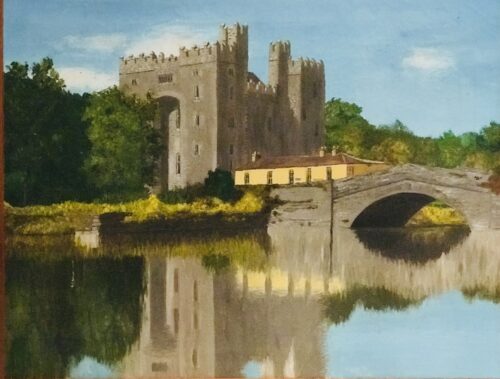
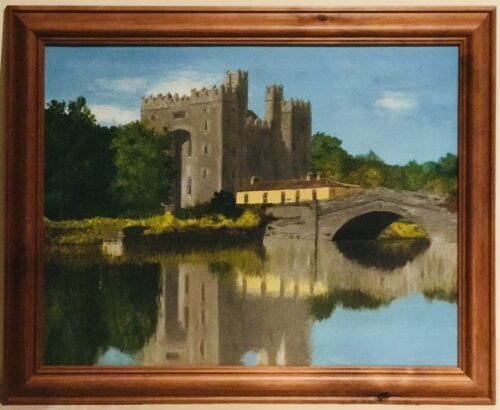


“The good news is, it will be staying in Ireland, ” says the managing director of Adam’s auction house, James O’Halloran. “That’s all we’ve been allowed to say for the moment, but we’re hoping that more information will be released fairly soon.” It’s understood that the State was outbid for the table and that the new owner is a private buyer.
Bidding on the table started at €70,000 but with one online bidder, three on the phone and one person in the room, it didn’t take long to sail past its lowest guide of €100,000, followed quickly by its top estimate of €200,000. “It got to €360,000 quite quickly,” O’Halloran says. “We thought it would do reasonably well, but because there was nothing to compare it to, we didn’t really know what to expect.”
The three-metre-long table was the property of Lord Inchiquin. Its rectangular top sits on a frieze of a dozen carved heads, with four carved heraldic lion corner supports and two figures of Hope and Charity, which would originally have been found on the stern of a galleon. It spent 300 years at Dromoland Castle before moving to Bunratty, where its elaborate series of carved masks became a key attraction.
When it was announced that the table – described by the Knight of Glin, Desmond FitzGerald, as “one of the most important and earliest pieces of Irish furniture” – was to be sold at Adam’s Country House Collections sale at Townley Hall, near Drogheda, Co Louth, there were calls for it to be kept in Ireland as it represents part of our cultural heritage. The only question now is, where will the table find its new home?




















| Desert Orchid | |
|---|---|
 |
|
| Sire | Grey Mirage |
| Grandsire | Double-U-Jay |
| Dam | Flower Child |
| Damsire | Brother |
| Sex | Gelding |
| Foaled | 11 April 1979 in Goadby, Leicestershire, England. |
| Country | Great Britain |
| Colour | Grey |
| Breeder | James Burridge |
| Owner | James Burridge, Midge Burridge, Richard Burridge, Simon Bullimore |
| Trainer | David Elsworth at Whitsbury Manor Racing Stables, Fordingbridge, Wiltshire |
| Record | 70: 34-11-8 |
| Earnings | £654,066 |
| Major wins | |
| Tolworth Hurdle (1984) Kingwell Hurdle (1984) Hurst Park Novices' Chase (1985) King George VI Chase (1986, 1988, 1989, 1990) Gainsborough Chase (1987, 1989, 1991) Martell Cup (1988) Whitbread Gold Cup (1988) Tingle Creek Chase (1988) Victor Chandler Chase (1989) Cheltenham Gold Cup (1989) Racing Post Chase (1990) Irish Grand National (1990) | |
| Awards | |
| Timeform rating: 187 | |
| Honours | |
| The Desert Orchid Chase at Wincanton Desert Orchid Chase at Kempton Park Racecourse Statue, ashes, headstone - Kempton Park Racecourse | |



| Date | Race name | D(f) | Course | Prize (£) | Odds | Runners | Place | Margin | Runner-up | Time | Jockey |
|---|---|---|---|---|---|---|---|---|---|---|---|
| 14 October 1885 | Post Sweepstakes | 6 | Newmarket | 500 | 5/4 | 3 | 1 | 1 | Modwena | Fred Archer | |
| 26 October 1885 | Criterion Stakes | 6 | Newmarket | 906 | 4/6 | 6 | 1 | 3 | Oberon | Fred Archer | |
| 28 October 1885 | Dewhurst Stakes | 7 | Newmarket | 1602 | 4/11 | 11 | 1 | 4 | Whitefriar | Fred Archer | |
| 28 April 1886 | 2000 Guineas | 8 | Newmarket | 4000 | 7/2 | 6 | 1 | 2 | Minting | 1:46.8 | George Barrett |
| 26 May 1886 | Epsom Derby | 12 | Epsom Downs | 4700 | 40/85 | 9 | 1 | 1.5 | The Bard | 2:45.6 | Fred Archer |
| 10 June 1886 | St. James's Palace Stakes | 8 | Ascot | 1500 | 3/100 | 3 | 1 | 0.75 | Calais | Fred Archer | |
| 13 June 1886 | Hardwicke Stakes | 12 | Ascot | 2438 | 30/100 | 5 | 1 | 2 | Melton | 2:43 | George Barrett |
| 15 September 1886 | St Leger Stakes | 14.5 | Doncaster | 4475 | 1/7 | 7 | 1 | 4 | St Mirin | 3:21.4 | Fred Archer |
| 29 September 1886 | Great Foal Stakes | 10 | Newmarket | 1140 | 1/25 | 3 | 1 | 3 | Mephisto | Fred Archer | |
| 1 October 1886 | Newmarket St Leger | 16 | Newmarket | 475 | N/A | 1 | 1 | Walkover | Walkover | Fred Archer | |
| 15 October 1886 | Champion Stakes | 10 | Newmarket | 1212 | 1/100 | 3 | 1 | 1 | Oberon | 2:19 | Fred Archer |
| 28 October 1886 | Free Handicap | 10 | Newmarket | 650 | 1/7 | 3 | 1 | 8 | Mephisto | 2:22 | Fred Archer |
| 29 October 1886 | Private Sweepstakes | 10 | Newmarket | 1000 | N/A | 1 | 1 | Walkover | Walkover | Fred Archer | |
| 9 June 1887 | Rous Memorial Stakes | 8 | Ascot | 920 | 1/4 | 1 | 6 | Kilwarlin | Tom Cannon | ||
| 12 June 1887 | Hardwicke Stakes | 12 | Ascot | 2387 | 4/5 | 4 | 1 | 0.25 | Minting | 2:44.4 | Tom Cannon |
| 16 July 1887 | Imperial Gold Cup | 6 | Newmarket | 590 | 30/100 | 3 | 1 | 2 | Whitefriar | 1:18 | Tom Cannon |
| Foaled | Name | Sex | Notable wins | Wins | Prize money |
| 1889 | Goldfinch | c | Biennial Stakes, New Stakes | 2 | £2,464 |
| 1889 | Kilkenny | f | 1 | £164 | |
| 1889 | Llanthony | c | Ascot Derby | 4 | £3,139 |
| 1889 | Orme | c | Middle Park Plate, Dewhurst Plate, Eclipse Stakes (twice), Sussex Stakes, Champion Stakes, Limekiln Stakes, Rous Memorial Stakes, Gordon Stakes | 14 | £32,528 |
| 1889 | Orontes II | f | 0 | ||
| 1889 | Orville | c | 0 | ||
| 1889 | Sorcerer | c | 1 | £229 | |
| 1890 | Glenwood | c | Aylesford Foal Plate | 2 | £1,726 |






"Lester Piggott, a dapper yet gaunt man, ghosts across the cold marble floor of a hotel in Mayfair with a vaguely haunted expression. The prospect of another interview, after a lifetime of such encounters, does not fill the great old jockey with glee. He has heard every question before and, as an infamously reluctant communicator, he has dodged most since his first winner in 1948. A Piggott interview is meant to be a challenge like no other.
Having spent the past few days consumed by grainy yet riveting footage of Piggott riding magnificent horses like Nijinsky and Sir Ivor, or watching him show a brutal need to win while driving on Roberto and The Minstrel to victory in the Derby in the 1970s, I launch into an earnest waffle of a greeting.
“Hello,” the 79-year-old Piggott says in his whispery mumble, offering a fleeting handshake.
Piggott’s life – stretching from 11 champion jockey titles and 30 Classic victories to a tangled personal life and being jailed for tax evasion – has always been compelling and prickly. Who else has won the Derby nine times, been stripped of his OBE and waged war against his own body so that he could scale 30 pounds less than his natural weight? The vivid backdrop lingers and a splash of colour peeks out in the form of Piggott’s pink shirt beneath a sober grey suit.
Forty years ago, when known as the Long Fellow, Piggott’s fame saw him ranked alongside Muhammad Ali, Pelé and George Best. Ali boasted loudly and justifiably that he was The Greatest; but the Long Fellow preferred icy silence or his trademark mumble.
“It’s not quite the same now,” Piggott says in muted relief. “I don’t get recognised as much. I’m much older, you know.”
A glass of hot water, given a zing by a slice of lemon, appears at his side. I ramble on about hardly being able to believe he will turn 80 next month.
“I can’t believe it either,” Piggott says. “What can you do? It’s a fact, isn’t it? A lot of people know I’m going to turn 80 – but I wish they didn’t.”
He is still married, after 55 years, to Susan. But Piggott and his girlfriend, Lady Barbara Fitzgerald, with whom he lives near Geneva, have just driven from Paris to London. Piggott went to watch Frankie Dettori and Golden Horn win the Prix de l’Arc de Triomphe – a race he won three times himself. “Golden Horn looks a good horse,” Piggott murmurs. “I’ve always liked The Arc. It’s a great race.”
At first, to keep within the remit of a racing interview, I ask if Golden Horn offers any real evidence that horses today are better than any of his best rides from 50 years ago. There is a long silence. I feel as if we’re in a Harold Pinter play and I allow the pause to stretch.
“I don’t think horses are any better today,” Piggott finally says. “There are good years and bad years. If you take Golden Horn and Mill Reef you can’t easily say one is better than the other. Mill Reef, Nijinsky and Sea The Stars are of the highest class. Golden Horn is close to that level. But how do we know which is really better?”
I’m more interested in the fact that his wife remarked in 2012 that, “at 72, you feel very differently about things than you do at 25.”
Piggott clears his throat. “When we get older we look at it differently. We’re all quite happy.” Susan has voiced similar sentiments despite Piggott fathering his son, Jamie, with his former secretary Anna Ludlow, and now living with Lady Barbara – 22 years younger than him. Does she really not harbour any bitterness? “No,” Piggott says. “I’m very lucky. We all get on.” Would he ever divorce Susan and marry Barbara? “Never thought about it.”
Jamie made his professional debut as a jockey at the age of 19 in July 2013. “He had a ride or two but he got a bit heavy to continue. He now works in the stables and rides every day. He probably could have been a good jockey.”
Piggott was ruthless with his own 5ft 8in frame. A typical story insists that his breakfast was a cigar and a cough – and that he ate hardly at all. Walter Swinburn, the former jockey, once told me Piggott kept his cigars and chocolate locked up. He would take out just one piece of a Yorkie bar to give him the rustle of a sugar rush.
“It did feel like a battle. But if we wanted to ride we had to be low. It wasn’t easy but we were all in the same boat because at that time the weights were so much lower.” Can he enjoy food now? “I don’t still eat much really … not compared to other people.”
Piggott was ravenous but strength coursed through him. He and Nijinsky cut a poetic picture of man and horse in full flow, but he needed raw force to secure some of his most famous wins.
“Well,” Piggott says, “it was important to win. The Minstrel was a very tough horse. He had to be – those three races he won [the Derby, the Irish Derby and the King George] in the summer of 1977 were hard. Roberto [who won the Derby in 1972] was different. You had to make him do it.”
Piggott underplays his savage use of the whip. “You couldn’t have used it like that these days,” he admits. “But I never really hurt the horses. It seemed like I was whacking them but it never was as bad as it looked.”
Could he have won the Derby on Roberto and The Minstrel if he had used a modern whip? Piggott pats me kindly. “Well … the other jockeys would have had the same whip …”
I slap my dumb head. Piggott laughs, a little wheezing cackle. “Exactly. But who knows?”
He grins mischievously when I say that one of my favourite Piggott stories is of his stunt when stealing the whip belonging to the French jockey Alain Lequeux in 1979. There was a furlong to run when, having dropped his own whip, he stretched out and lifted a replacement from Lequeux’s incredulous grasp. It was theft; but it was also pure artistry.
“The other boy [Lequeux] was a good friend of mine. It was a big race, in Deauville, and I wanted to win. It looked like he was dropping out and someone was ahead of him. He knocked the whip out of my hand, accidently of course, so I just took his like that …” Piggott leans across, his face as sly and concentrated as the Artful Dodger. With a cunning pluck of the air he nicks my imaginary whip. “Instinct. I did it just like that. I finished second. He was third. That was the problem. That’s why they put me off. But no rule covers it.”
Whip-stealing is not in racing’s rule book? “I saw it happen again last month. Did you read about it? It was in America – on the old track in Pennsylvania [when, during a race, a jockey, Angel Castillo, lost his own whip and then stole another belonging to Pierre Hernández Ortega]. They didn’t do anything to him. I got a [20-day] ban.”

Piggott was banned often in his career. At 18 he was suspended for six months after the racing authorities decided his father, Keith, had persuaded him to endanger other jockeys. Piggott was already famous and, a year earlier, in 1953, his name had been mentioned in a PG Wodehouse story. Were they simply intent on cutting him down? “I suppose so. Today you’d probably get four days. They just did what they liked really. It wasn’t very fair. Of course racing’s much better regulated now.”
Other jockeys seemed a little frightened of him. Did he use that stone-faced aura as a weapon? “Not consciously. I don’t see why they should’ve been frightened. It’s funny you should say that.”
It’s likely that they were in awe of him. “Probably – some of them anyway.”
On Saturday, at the finale to the European flat season, on the richest day in British racing with four Group One races, Piggott will be the guest of honour at Ascot. He will hand out the awards at the Qipco British Champions Day. “It should be terrific. They’ve done well to put all those races together.”
One of Piggott’s closest friends passed on a message that suggested the 366 days the jockey served of a three-year prison sentence, for failing to declare £3.25m in tax, softened him. Piggott looks briefly affronted. “It didn’t make any difference.”
When he came out of prison was his appetite for life renewed? “I never looked on it that way. It was stupid, really, to be there. I don’t know how to describe it. It was just unnecessary.”
It has been said, even by the Queen and Peter O’Sullevan, an arch Piggott supporter and the majestic race commentator who died earlier this year, that the jockey paid back the tax man from a bank account he had never previously declared. “Oh, that’s rubbish,” Piggott insists. “Really. It is. Who would do that?”
Piggott did something more unbelievable. Twelve days after walking out of prison, at the age of 54, he won the 1990 Breeders’ Cup in the US on a horse called Royal Academy. Piggott grins when I say it resembles a movie. “Or a fairytale. It was great, wasn’t it? I was lucky to get the chance. When I came out I had no idea I would be riding him.”
Royal Academy, ridden expertly by Piggott, surged from the back of the field in a dramatic finish. “I was a long way back because he had to be. He wasn’t really a mile horse so we had to hold him back as long as possible.”
Piggott’s father, a former jump jockey who also won the Grand National as a trainer, was notoriously tough. He was still alive when Piggott won that miraculous race. Did his dad compliment him on any of his 4,493 victories? “Not really. I knew him so well. He only talked about it when I did something wrong. That was the best way.”
After his first win as a 12-year-old at Haydock Park, his mother Iris said: “He is quite a good rider, but will never be as good as his father. Don’t make a fuss. Lester is a very ordinary boy.”
Piggott nods. “She downplayed things – and that’s a good thing.”
Perhaps now, nearing his 80th birthday, Piggott can say out loud what he surely believes – that he was the greatest ever jockey? “You just hope you were. But how can you tell?”
“You’ve had quite a life,” I say to the old jockey.
“Oh yeah,” he smiles, realising that this interview, rather than his life, is almost over. “It’s been terrific, really. I can’t complain.”
Lester Piggott leans over and, with another small pat of my arm, he reminds me of one last salient truth. “But there’s only so much you can talk about.”












 Source: Photojoiner
EARLIER THIS YEAR, the controversial Cuban revolutionary Che Guevara appeared on an Irish stamp to commemorate 100 years since his birth.
As well as unearthing the debate around the divisive legacy of the Argentine who was pivotal in the struggle to overthrow Cuba’s dictatorship, it also brought to the fore a discussion of Guevara’s Irish links.
Che’s father, who’s full name is Ernesto Guevara Lynch, was proud of his Irish roots and the story of how his family built a business in Argentina after fleeing Ireland during Cromwell’s era.
Years later when Che was Cuba’s transport minister, he made an unscheduled stop off in Limerick, and wrote a letter to his father, who he thought would be pleased to hear that he was visiting a country of his ancestry, says Nathan Mannion, curator at Epic, the Irish emigration museum.
There’s another, non-familial link that Guevara has with the island of Ireland – the famous, ubiquitous two-tone print of Che was created by an Irish artist Jim Fitzpatrick, which was created using a photo by Cuban photographer Guerrillero Heroico.
Source: Photojoiner
EARLIER THIS YEAR, the controversial Cuban revolutionary Che Guevara appeared on an Irish stamp to commemorate 100 years since his birth.
As well as unearthing the debate around the divisive legacy of the Argentine who was pivotal in the struggle to overthrow Cuba’s dictatorship, it also brought to the fore a discussion of Guevara’s Irish links.
Che’s father, who’s full name is Ernesto Guevara Lynch, was proud of his Irish roots and the story of how his family built a business in Argentina after fleeing Ireland during Cromwell’s era.
Years later when Che was Cuba’s transport minister, he made an unscheduled stop off in Limerick, and wrote a letter to his father, who he thought would be pleased to hear that he was visiting a country of his ancestry, says Nathan Mannion, curator at Epic, the Irish emigration museum.
There’s another, non-familial link that Guevara has with the island of Ireland – the famous, ubiquitous two-tone print of Che was created by an Irish artist Jim Fitzpatrick, which was created using a photo by Cuban photographer Guerrillero Heroico.
 Source: Epic
After the stamp controversy earlier this year, Fitzpatrick told TheJournal.ie that he was used to the controversy around Guevara, dismissing the criticism and accusations levelled against him as “black propaganda”.
He added that he was “immensely proud” to have his artwork of the Irish-descendant revolutionary on an official Irish stamp.
Irish roots
Patrick Lynch was born and raised in 1715 to parents from two of the main tribes of Galway. But after defeats at the hands of Cromwell’s forces, and later those of William of Orange, he fled to Bilbao in the Basque region of northern Spain, and then to Rio de la Plata, which would later become Argentina.
“He became a prominent figure in the Spanish government, a leading civil servant,” Nathan told TheJournal.ie.
After travelling to Buenos Aires in 1749 to work as a captain in the Milicias, he married a wealthy heiress. The valuable lands he gathered over the years were then passed on to his son, who followed into his father’s line of business.
In the century that followed, one of Patrick Lynch’s descendants would set up a shipping company, fight in the Argentine army and Chilean navy, write novels and short stories, paint and found a movement for rural libraries in Argentina.
It’s hard not to see how that family history didn’t impact on young Che, who was athletic and political, as well as passionate about poetry.
But it was while Che Guevara toured South America during his 20s that the spark of political activism was lit – it was during this time that he also penned a book of his own – The Motorcycle Diaries, (which decades later was turned into a film of the same name).
Source: Epic
After the stamp controversy earlier this year, Fitzpatrick told TheJournal.ie that he was used to the controversy around Guevara, dismissing the criticism and accusations levelled against him as “black propaganda”.
He added that he was “immensely proud” to have his artwork of the Irish-descendant revolutionary on an official Irish stamp.
Irish roots
Patrick Lynch was born and raised in 1715 to parents from two of the main tribes of Galway. But after defeats at the hands of Cromwell’s forces, and later those of William of Orange, he fled to Bilbao in the Basque region of northern Spain, and then to Rio de la Plata, which would later become Argentina.
“He became a prominent figure in the Spanish government, a leading civil servant,” Nathan told TheJournal.ie.
After travelling to Buenos Aires in 1749 to work as a captain in the Milicias, he married a wealthy heiress. The valuable lands he gathered over the years were then passed on to his son, who followed into his father’s line of business.
In the century that followed, one of Patrick Lynch’s descendants would set up a shipping company, fight in the Argentine army and Chilean navy, write novels and short stories, paint and found a movement for rural libraries in Argentina.
It’s hard not to see how that family history didn’t impact on young Che, who was athletic and political, as well as passionate about poetry.
But it was while Che Guevara toured South America during his 20s that the spark of political activism was lit – it was during this time that he also penned a book of his own – The Motorcycle Diaries, (which decades later was turned into a film of the same name).
 Source: Epic
Referring to Che’s “restless” nature, his father declared “the first thing to note is that in my son’s veins flowed the blood of the Irish rebels”.
“Half a million, to a million of the Argentinian population claim to be of Irish descent. But there are problems with identifying people of Irish descent, because when the Irish arrived during that era, they were recorded as ‘British’, so it’s a little bit problematic identifying who was Irish and who wasn’t.
“So the ancestry of Guevara is quite exceptional – as they emigrated to Argentina long before most Irish people did, during the latter half of the 19th century, coming up to the Great Famine.”
Jim Fitzpatrick (born James Fitzpatrick in 1944) is an Irish artist. He is best known for elaborately detailed work inspired by the Irish Celtic artistictradition. However, his most famous single piece is rather different in style, his iconic two-tone portrait of Che Guevara created in 1968, based on a photo by Alberto Korda.
Jim Fitzpatrick was born in December 1944 to James and Elizabeth Fitzpatrick (née O'Connor). His parents had married in the north Dublin suburb of Cabra in June 1943. During a period of childhood sickness, Fitzpatrick read and drew in bed, as well as his mother and great-aunt telling him stories of the Tuatha Dé Danann, Cú Chulainn and Fionn MacCumhaill. He was educated at the Franciscan College Gormanston, County Meath, just north of Dublin. His father was a photo-journalist and he is a grandson of political cartoonist Thomas Fitzpatrick.
Fitzpatrick's earliest work was the graphic portrait of Che Guevara, which was based on the photograph by Alberto Korda, entitled Guerrillero Heroico, was taken on 5 March 1960. Fitzpatrick met Guevara 5 years earlier in Kilkee during Guevara's visit to trace his Irish ancestry. Having initially tried to distribute the poster himself, Fitzpatrick chose to remove copyright from the image so that is could be used freely by left wing groups, stating that "I literally wanted it to breed like rabbits. I wanted it to spread."
In 1978, he wrote and illustrated a book called The Book of Conquests, the retelling of a cycle of Irish myths, the Lebor Gabála Érenn. The book is a retelling of the legends of the coming of the Tuatha dé Dannan to Ireland and their fight with the Fir Bolg. The illustrations include intricate Celtic scroll work and knotwork, for which Fitzpatrick has become known. A second book, The Silver Arm, is based on the deeds of Nuada of the Silver Arm and Lugh in their fight with the Formor.
Fitzpatrick has produced artwork for bands such as Thin Lizzy including their Jailbreak album in 1976, for Sinéad O'Connor's 2000 album Faith and Courage, for The Darkness' 2003 single "Christmas Time (Don't Let the Bells End)",Norwegian black metal band Darkthrone's 2013 album cover The Underground Resistance, and took the photograph for the cover of Louise Patricia Crane's 2020 album Deep Blue.He was commissioned by CityJet in 2007 to create images reflecting Ireland's culture, mythology, history and landscapes.
In 2011, Fitzpatrick announced that he intended to copyright the iconic red and black Che Guevara graphic. He cited "crass commercial" use of the image for his decision and planned to hand over the copyright and all rights, in perpetuity, to the family of Guevara in Cuba. The image remains available for free through Fitzpatrick's website for non-commercial usage. An Post released a stamp featuring Fitzpatrick's image of Guevara in 2017 to mark 50 years since its publication.
Source: Epic
Referring to Che’s “restless” nature, his father declared “the first thing to note is that in my son’s veins flowed the blood of the Irish rebels”.
“Half a million, to a million of the Argentinian population claim to be of Irish descent. But there are problems with identifying people of Irish descent, because when the Irish arrived during that era, they were recorded as ‘British’, so it’s a little bit problematic identifying who was Irish and who wasn’t.
“So the ancestry of Guevara is quite exceptional – as they emigrated to Argentina long before most Irish people did, during the latter half of the 19th century, coming up to the Great Famine.”
Jim Fitzpatrick (born James Fitzpatrick in 1944) is an Irish artist. He is best known for elaborately detailed work inspired by the Irish Celtic artistictradition. However, his most famous single piece is rather different in style, his iconic two-tone portrait of Che Guevara created in 1968, based on a photo by Alberto Korda.
Jim Fitzpatrick was born in December 1944 to James and Elizabeth Fitzpatrick (née O'Connor). His parents had married in the north Dublin suburb of Cabra in June 1943. During a period of childhood sickness, Fitzpatrick read and drew in bed, as well as his mother and great-aunt telling him stories of the Tuatha Dé Danann, Cú Chulainn and Fionn MacCumhaill. He was educated at the Franciscan College Gormanston, County Meath, just north of Dublin. His father was a photo-journalist and he is a grandson of political cartoonist Thomas Fitzpatrick.
Fitzpatrick's earliest work was the graphic portrait of Che Guevara, which was based on the photograph by Alberto Korda, entitled Guerrillero Heroico, was taken on 5 March 1960. Fitzpatrick met Guevara 5 years earlier in Kilkee during Guevara's visit to trace his Irish ancestry. Having initially tried to distribute the poster himself, Fitzpatrick chose to remove copyright from the image so that is could be used freely by left wing groups, stating that "I literally wanted it to breed like rabbits. I wanted it to spread."
In 1978, he wrote and illustrated a book called The Book of Conquests, the retelling of a cycle of Irish myths, the Lebor Gabála Érenn. The book is a retelling of the legends of the coming of the Tuatha dé Dannan to Ireland and their fight with the Fir Bolg. The illustrations include intricate Celtic scroll work and knotwork, for which Fitzpatrick has become known. A second book, The Silver Arm, is based on the deeds of Nuada of the Silver Arm and Lugh in their fight with the Formor.
Fitzpatrick has produced artwork for bands such as Thin Lizzy including their Jailbreak album in 1976, for Sinéad O'Connor's 2000 album Faith and Courage, for The Darkness' 2003 single "Christmas Time (Don't Let the Bells End)",Norwegian black metal band Darkthrone's 2013 album cover The Underground Resistance, and took the photograph for the cover of Louise Patricia Crane's 2020 album Deep Blue.He was commissioned by CityJet in 2007 to create images reflecting Ireland's culture, mythology, history and landscapes.
In 2011, Fitzpatrick announced that he intended to copyright the iconic red and black Che Guevara graphic. He cited "crass commercial" use of the image for his decision and planned to hand over the copyright and all rights, in perpetuity, to the family of Guevara in Cuba. The image remains available for free through Fitzpatrick's website for non-commercial usage. An Post released a stamp featuring Fitzpatrick's image of Guevara in 2017 to mark 50 years since its publication.
